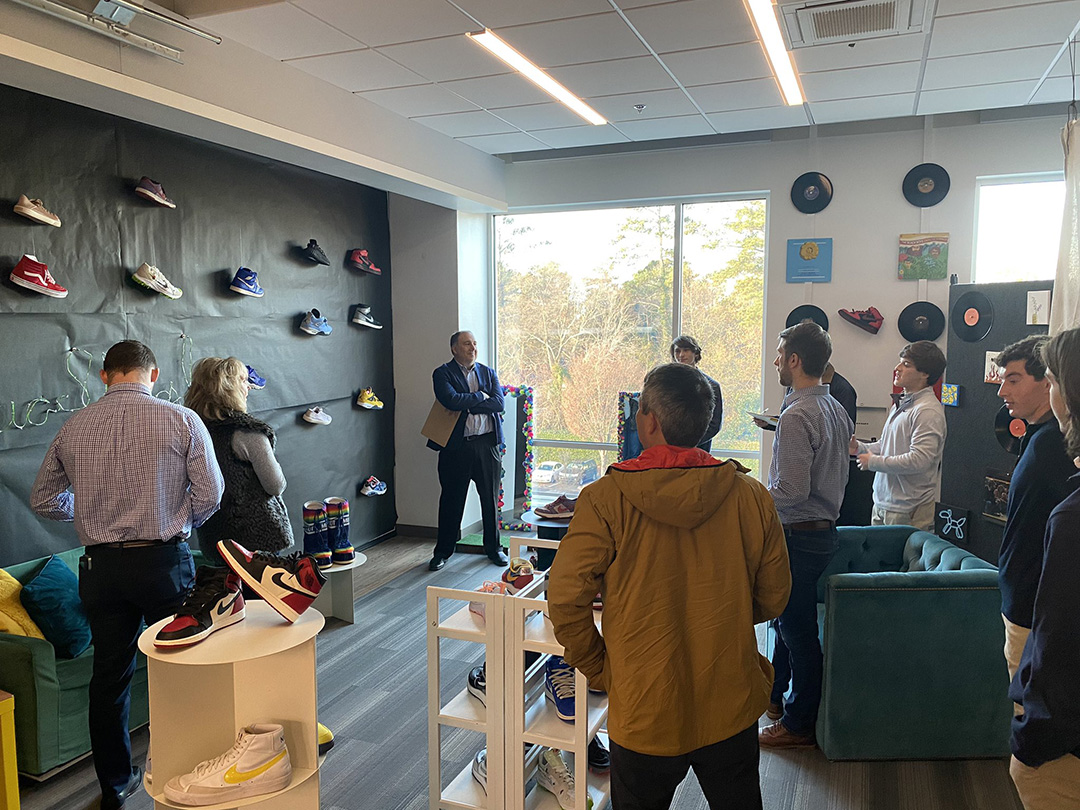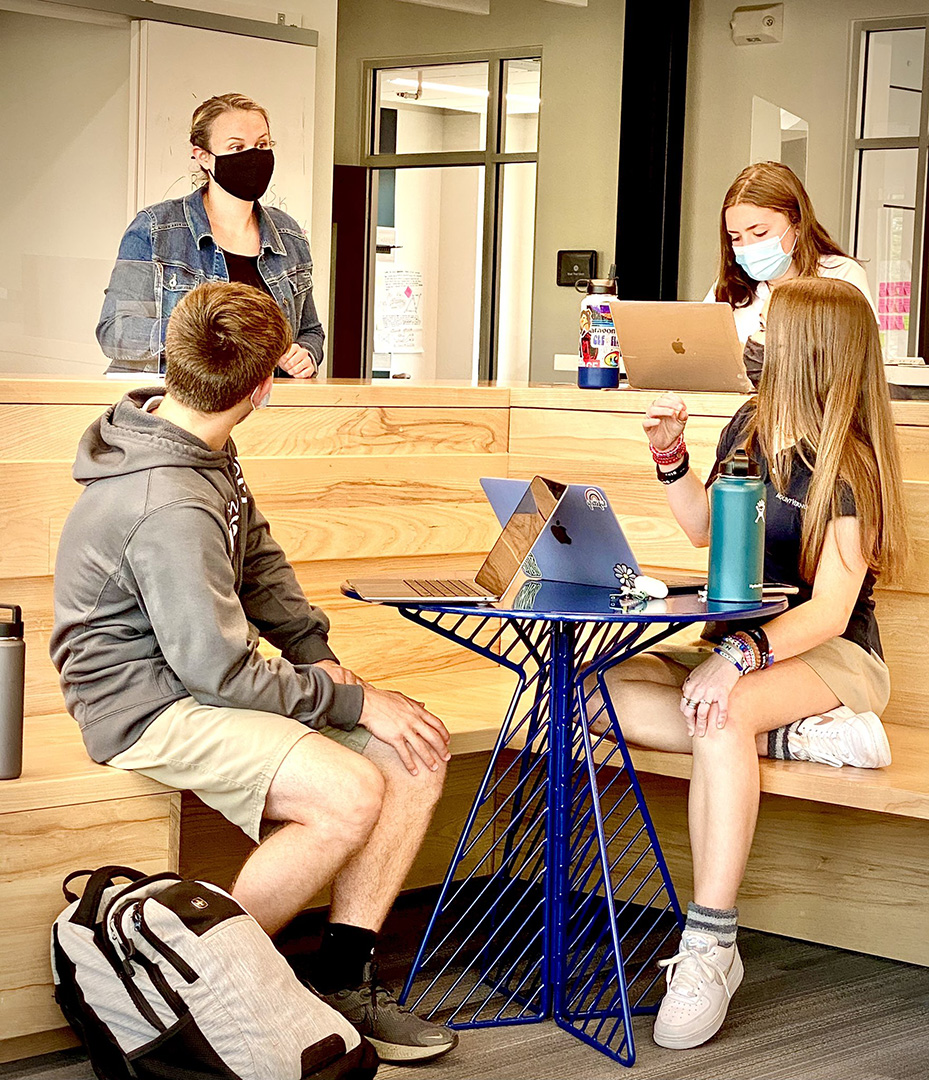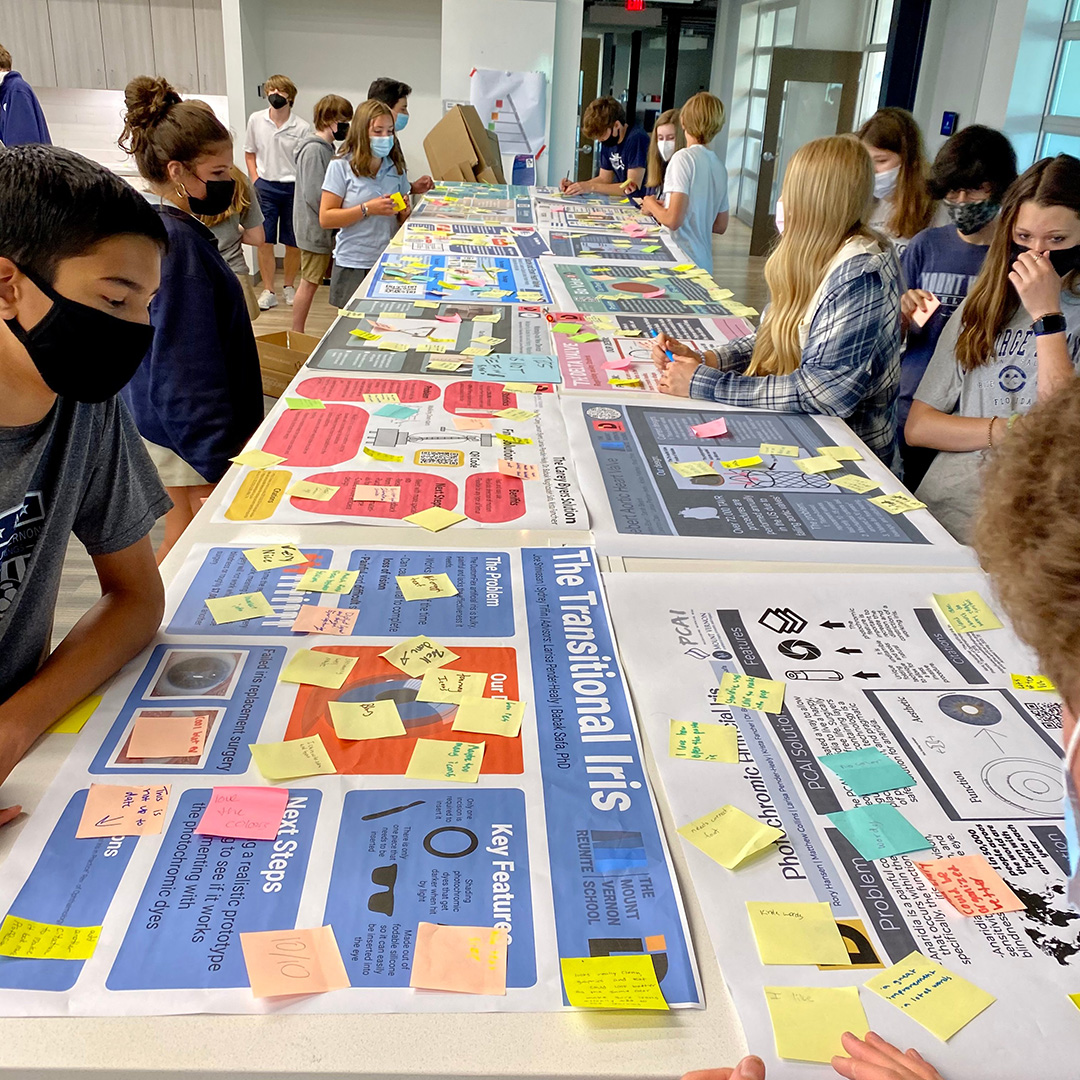This story was contributed by Brad Droke, Director of Innovation Diploma and was featured in the Spring 2022 SAIS Newsletter.
In the spring of 2014, Mount Vernon Ventures at The Mount Vernon School hosted an event called the Council on Innovation, where several groups of students were assembled to engage in a design sprint with local and national innovators who were invited to campus to explore the question, “How might we make school life more reflective of real-life?” The following fall, Innovation Diploma (iD), a high-impact, four-year program where students can fail, grow, and succeed while developing their creative purpose by doing work that intrinsically matters, was launched.
Growth of the Program
In the first year, 13 iD students used elective time in their schedule to offer “reverse mentoring” sessions — consultations about innovation — to parents/marketplace leaders in the school who were willing to pose a challenge they faced in their companies and places of work. These 90-minute design sprints resulted in prototypes that the clients could take back to their companies. Through purposeful storytelling within our community, more parents were convinced that iD provided an experience that prepared students to be creative problem-solvers who would impact the world around them through purposeful innovation.
Over the last several years, iD has steadily grown in curricular offerings and enrollment. iD is no longer an elective but rather a school-within-a-school that awards credit for: humanities; chemistry; biology; social entrepreneurship; maker, design, and engineering; and arts that focus on graphic design and live event production. This expanded approach has given us a space to test different educational strategies and approaches at scale, like inquiry-based learning, design thinking, external partnerships, and competency-based education. This approach allowed the Mount Vernon community to interact with and witness school change first-hand. We made our ideas about the future of education visible and over time, people became more comfortable with the changes we made, which led to a gradual increase in iD enrollment. iD currently enrolls between 25% and 30% of upper school students.
Consulting Opportunities
Consulting opportunities have evolved too. iD upperclassmen now participate in multiple design brief partnerships with outside organizations during their junior and senior year. Over the last eight years, learners have worked with Fortune 100 companies, non-profit organizations, government agencies, small businesses, and start-ups to design a park, forecast the future of retail, curate a museum experience, develop a scale prototype of the future of air travel, and make a boy’s lifelong dream of flying in a Millennium Falcon come true.
Clients have included AT&T Foundry, AWS (Amazon Web Services), Chick-fil-A, the Children’s Museum of Atlanta, Delta Air Lines, Newell Brands, and Porsche North America. By offering design briefs, we have learned that when students are tasked with solving a complex problem for an authentic audience, the stakes of learning fundamentally change. The bar is set higher because the student work matters not only to a teacher, peer, or parent but also to an external partner who is relying on them. For Mount Vernon, all of this starts with intentionally building a robust culture of learner agency.
Designing Learner-Centered Experiences
iD students do not immediately start working on design briefs. They participate in an intentional onboarding that equips them with design thinking and innovation skills as they work through progressive laps of increasingly more complex design challenges for authentic clients. These challenges are opportunities for students to practice important transferable skills like collaboration, multidisciplinary learning, and problem solving in a wide array of industries and contexts. It also allows them to lean into the momentum of their own learning as they become empowered to control the full arc of their education. Establishing a school culture like this starts with the intentionality of a teacher. Here are some strategies that have worked for us over the years.
- Share intellectual vulnerability.
At Mount Vernon, we know that relationships are foundational to learning. We also know that our students need to see adults engage with divergent thought. Daniel Coyle, author of The Culture Code: The Secrets of Highly Successful Groups, writes, “When we see people in our peer group play with an idea, our behavior changes. That’s how intelligence is created. That’s how culture is created.” As they model their intellectual vulnerability, students start to take risks, ask questions, and challenge accepted norms. In the words of Adam Grant, we want our students to have “strong opinions loosely held.” - Set the bar high.
When students are tasked with solving a complex problem for an authentic audience, the stakes fundamentally change, and the learning becomes life worthy. Coyle states, “All creative projects are cognitive puzzles involving thousands of choices and thousands of potential ideas, and you almost never get the right answer right away.” Work like this sets expectations and defines responsibilities beyond any rubric or assessment that one might design within the school bubble. - Get out of their way.
The best work happens on design briefs when there is no iD facilitator in the room. In iD, students own the design brief work. They are on the ground every day working to solve their client’s problems. iD facilitators serve as mentors who come alongside and challenge the work to unlock a new way of thinking about their problems. Then, we step back and let the students wrestle with how a new insight might disrupt their current line of thinking.
Establishing a learner-centered culture in the classroom will set the conditions for students to uncover their creative purpose. “Building creative purpose isn’t really about creativity,” Coyle explains. “It’s about building ownership, providing support, and aligning group energy toward the arduous, error-filled, ultimately fulfilling journey of making something new.” Isn’t making something new what school should be about? How might students be empowered to own the transformation of their learning from consuming to creating? Wouldn’t that make the classroom more reflective of the lives they are likely to live?
Brad Droke serves as the director of Innovation Diploma at The Mount Vernon School. Throughout his career, he has led the design of curricula, experiences, and environments that empower students and educators to bridge the gap between their current reality and their future ideal. He spends most of his time at Mount Vernon facilitating design briefs with iD upper-level students and teaching “Design for Good” to all first-year iD students. When he’s not at school, he is spending time with his wife and two kids exploring all the playgrounds in Atlanta.



